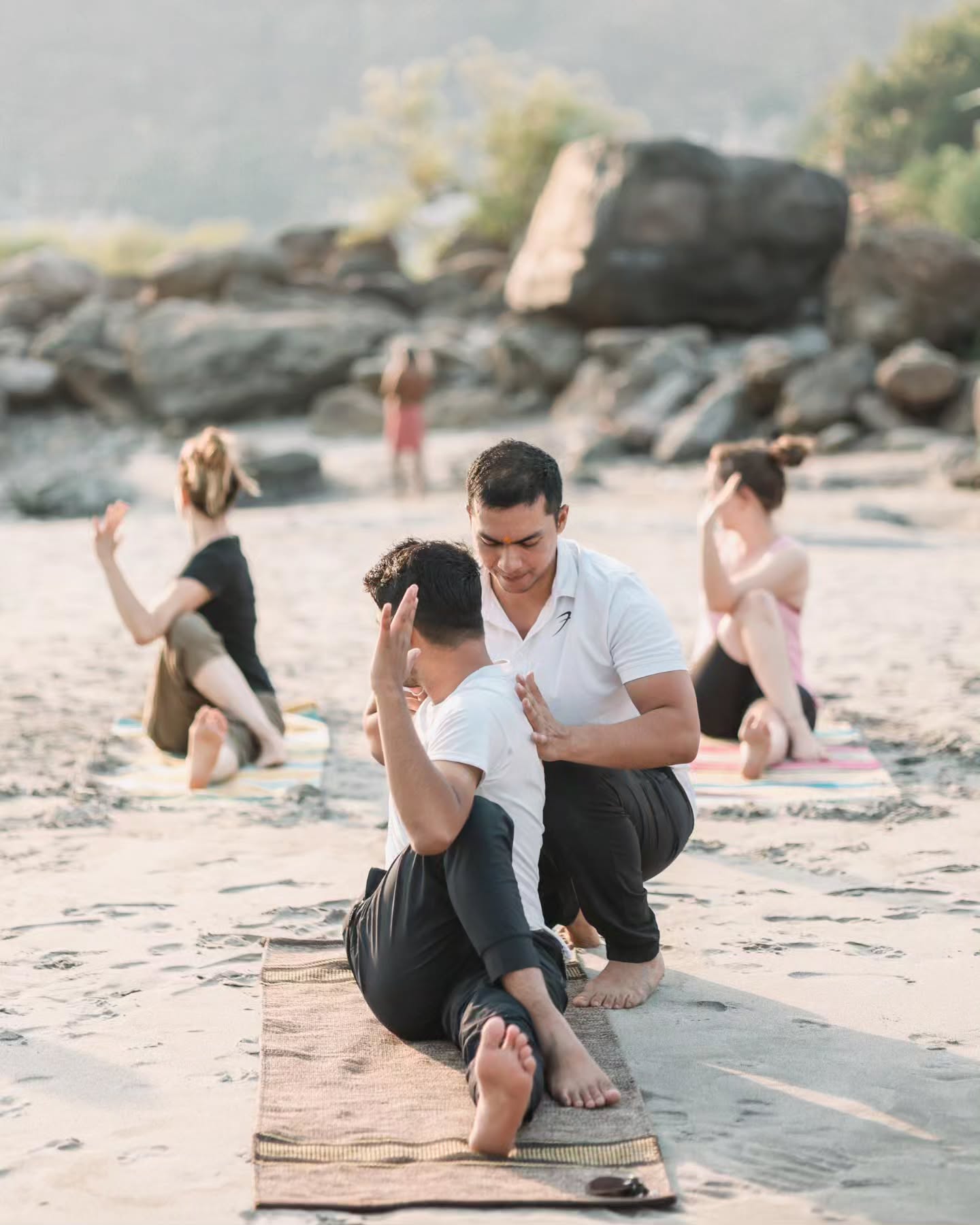Anxiety can strike anytime — a racing heart, tight chest, shallow breathing, or a sudden feeling of panic. While it’s natural to feel anxious sometimes, chronic anxiety can affect your health, sleep, and quality of life. The good news? You have a powerful tool to calm anxiety instantly, and it’s something you always carry with you: your breath.
In this guide, you’ll learn how simple breathing exercises can help reduce anxiety fast, why they work, and how to use them anywhere — whether you’re at work, in bed, or stuck in traffic.
Why Breathing Matters for Anxiety
When you’re anxious, your breathing becomes quick, shallow, and irregular. This sends a message to your brain that something is wrong, activating your fight-or-flight response — the same system that prepares you to escape danger. While this response is helpful in emergencies, it creates uncomfortable symptoms during anxiety, like:
- Racing heart
- Tight chest
- Dizziness or lightheadedness
- Muscle tension
- Panic or restlessness
Deep, slow breathing does the opposite. It activates the parasympathetic nervous system — your body’s “rest and relax” mode. This helps calm your heart rate, relax your muscles, and quiet your mind.
The best part? You can start feeling better in just 2 to 5 minutes with the right breathing techniques.
Benefits of Breathing Exercises
Breathing exercises are more than a quick fix — they help train your body to handle stress better over time. Here are just a few of the benefits:
- Reduce immediate symptoms of anxiety and panic
- Improve focus and mental clarity
- Promote better sleep
- Lower blood pressure and heart rate
- Increase feelings of control and calm
- Help you feel grounded during emotional overwhelm
Let’s look at some of the easiest and most effective breathing techniques you can try right now.
1. Box Breathing (4-4-4-4 Method)
Best for: Calming the mind, lowering stress quickly
Box breathing is a simple technique used by athletes, military members, and people in high-stress jobs. It’s easy to remember and effective at slowing down anxious thoughts.
How to do it:
- Inhale through your nose for 4 seconds
- Hold your breath for 4 seconds
- Exhale slowly through your mouth for 4 seconds
- Hold your breath for 4 seconds
Repeat for 4–5 rounds.
Why it works: The equal length of each part of the breath gives your brain something to focus on and helps balance the nervous system.
2. 4-7-8 Breathing
Best for: Falling asleep, managing panic, calming the body
Popularized by Dr. Andrew Weil, the 4-7-8 technique is deeply relaxing and ideal before bed or during high anxiety moments.
How to do it:
- Inhale through your nose for 4 seconds
- Hold your breath for 7 seconds
- Exhale slowly through your mouth for 8 seconds
Repeat for 3–4 rounds. If 7 and 8 seconds feel too long, start with shorter counts and build up.
Why it works: This pattern helps slow the heartbeat, calm the nervous system, and bring your body into a restful state.
3. Alternate Nostril Breathing (Nadi Shodhana)
Best for: Balancing energy, calming the mind, reducing overthinking
This yogic breathing technique balances the left and right sides of the brain and nervous system.
How to do it:
- Sit comfortably and use your right thumb to close your right nostril
- Inhale slowly through your left nostril
- Close the left nostril with your ring finger and release your right nostril
- Exhale through your right nostril
- Inhale through the right nostril, then close it
- Exhale through the left nostril
That completes one round. Repeat 5–8 rounds.
Why it works: It brings awareness to your breath, reduces racing thoughts, and creates a sense of balance.
4. Belly Breathing (Diaphragmatic Breathing)
Best for: Everyday stress, long-term anxiety, grounding
This is the most basic and natural breathing style, yet many people breathe shallowly from the chest — especially during stress.
How to do it:
- Sit or lie down comfortably
- Place one hand on your chest and the other on your belly
- Inhale deeply through your nose, letting your belly rise
- Exhale slowly through your mouth, feeling your belly fall
Try for 5 minutes, focusing on making the belly hand move more than the chest hand.
Why it works: Belly breathing brings oxygen deep into the lungs and calms your entire system.
5. Sighing Breath
Best for: Letting go of tension quickly
A natural response to stress is to sigh. This technique builds on that reflex to create release.
How to do it:
- Inhale deeply through your nose
- Exhale with a loud, audible sigh through your mouth
- Repeat 3–5 times
You can even raise your arms on the inhale and let them drop as you sigh.
Why it works: It gives your body a physical and emotional signal to release and relax.
6. Extended Exhale Breathing
Best for: Slowing a racing heart, feeling safe, grounding
A long exhale helps shift the body into a parasympathetic state.
How to do it:
- Inhale through your nose for 4 seconds
- Exhale through your mouth for 6–8 seconds
- Repeat for 5–10 rounds
You can also hum on the exhale to stimulate the vagus nerve and enhance relaxation.
Why it works: A longer exhale slows the heart rate and signals safety to the brain.
When to Use These Breathing Exercises
You can use these techniques anytime anxiety starts to rise. Here are a few practical times to try them:
- Before a big meeting or presentation
- During an anxiety or panic attack
- While stuck in traffic
- Before going to sleep
- After receiving upsetting news
- When you’re overthinking or feeling overwhelmed
Create a 5-Minute Anti-Anxiety Breathing Routine
You don’t need a full hour of meditation to feel better. Try this simple 5-minute routine:
🔹 Minute 1–2: Belly breathing (deep inhales and slow exhales)
🔹 Minute 3: Box breathing (4-4-4-4)
🔹 Minute 4: Extended exhale (inhale 4, exhale 6–8)
🔹 Minute 5: Sighing breath with shoulder drops
Finish with a moment of silence, noticing how your body feels.
Real-Life Example: Meet Arjun
Arjun is a college student who often feels anxious before exams. His heart races, his hands get sweaty, and he can’t focus. One day, he learned the 4-7-8 breath and practiced it for just 2 minutes before a test.
To his surprise, his body calmed down and his mind became clearer. He started using this technique daily — not just before exams, but whenever he felt overwhelmed. Within a few weeks, his anxiety levels dropped, and he began sleeping better too.
You don’t need special training — just a few minutes and your breath.
Common Questions
❓ How often should I do breathing exercises?
You can practice them daily, even when you’re not anxious. Just 5–10 minutes a day builds resilience to stress over time.
❓ What if I can’t focus on my breath?
It’s normal for your mind to wander. Just gently bring your attention back to your breath. Over time, it gets easier.
❓ Can I do these exercises lying down?
Yes! Many people find it easier to relax while lying in bed or on a mat.
❓ Do breathing exercises really stop panic attacks?
They can greatly reduce the intensity and help you recover faster. Practicing regularly also helps prevent future attacks.
Final Thoughts
Your breath is your anchor. It’s always with you — quiet, powerful, and free.
When anxiety strikes, you don’t have to feel helpless. With just a few minutes of focused breathing, you can send a message to your brain: “I am safe. I am calm. I can handle this.”
Try one of these exercises today, even if you’re not anxious. Build the habit, so when you need it most, it’s second nature.



